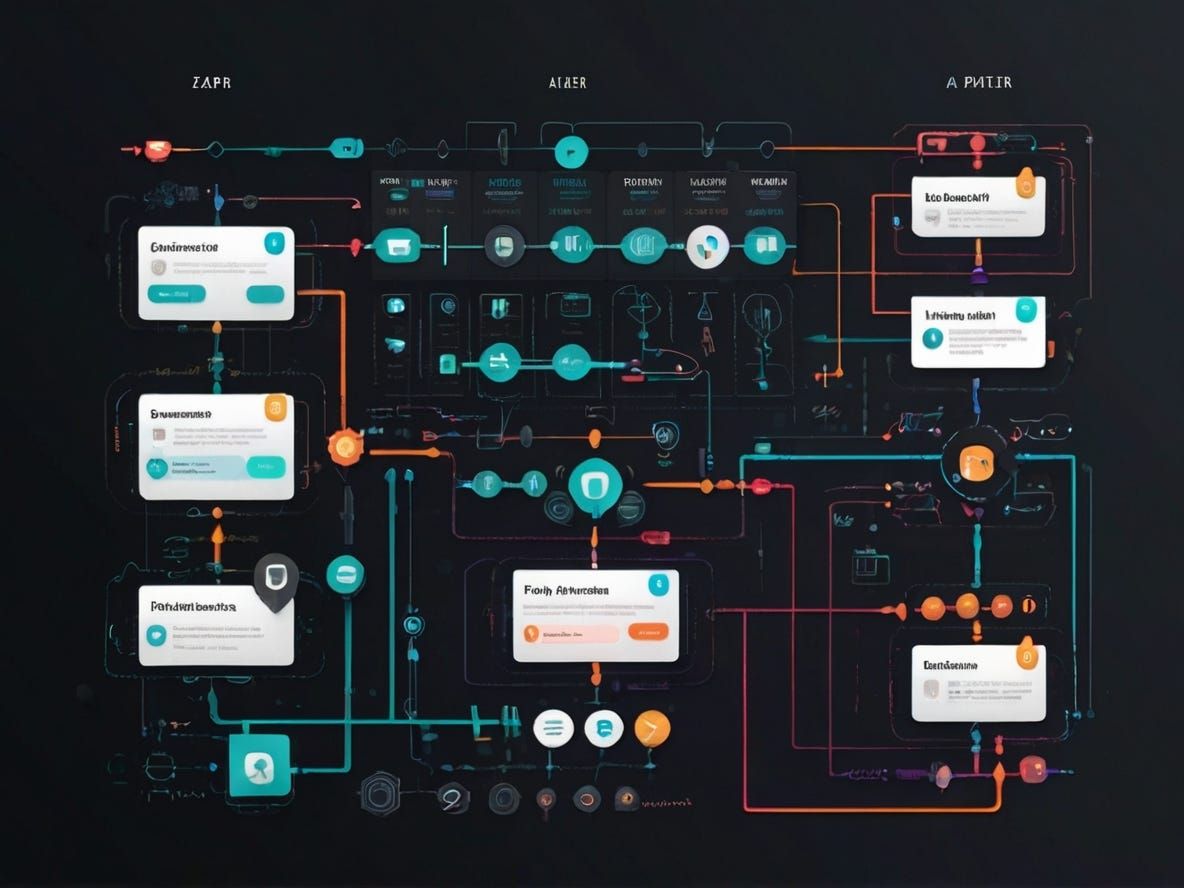

In today’s fast-paced work environment, productivity has become a critical factor for success. Let’s explore this topic in more detail with Ping Pong Go below. As we delve into the world of workflow automation and productivity tools, we’ll discover how these innovations can transform your workday, saving you hours each week and allowing you to focus on what truly matters. Whether you’re an office worker, freelancer, middle manager, or remote professional in a creative or technology field, this comprehensive guide will equip you with the knowledge and tools to boost your efficiency, manage your time effectively, and achieve a better work-life balance.
In an era where time is our most precious resource, workflow automation has emerged as a game-changer for professionals across various industries. By streamlining repetitive tasks and optimizing processes, automation tools allow us to reclaim valuable hours each week, redirecting our energy towards more meaningful and impactful work.
The benefits of workflow automation extend far beyond mere time-saving. It reduces human error, ensures consistency in task execution, and allows for better resource allocation. Moreover, it can significantly decrease stress levels by eliminating the constant pressure of managing numerous small tasks that can accumulate throughout the workday.
For office workers, automation can transform mundane administrative tasks into seamless background processes. Freelancers can leverage these tools to manage client communications, project timelines, and invoicing more efficiently. Middle managers can use automation to streamline team coordination and reporting, while remote workers in creative or technology fields can automate various aspects of their workflow to maintain productivity in a distributed work environment.
As we progress through this article, we’ll explore a range of productivity tools and techniques that can help you harness the power of automation in your daily work life. From task management apps to time-tracking solutions and advanced work methodologies, you’ll discover how to create a personalized productivity system that aligns with your unique needs and work style.
In the quest for increased productivity, having the right tools at your disposal can make all the difference. Let’s explore some of the most effective productivity tools that can help you automate your workflow and save hours every week.
One of the cornerstones of productivity is effective task management and project planning. Tools in this category help you organize your work, prioritize tasks, and collaborate with team members seamlessly. Some popular options include:
Asana: This versatile project management tool allows you to create tasks, assign them to team members, set due dates, and track progress. Its intuitive interface and customizable workflows make it suitable for various industries and project types.
Trello: With its card-based system, Trello offers a visual approach to task management. It’s particularly useful for teams that prefer a Kanban-style workflow, allowing you to move tasks through different stages of completion easily.
Todoist: For those who prefer a simpler, more straightforward task management tool, Todoist offers a clean interface for creating to-do lists, setting reminders, and organizing tasks by project or category.
These tools not only help you keep track of your tasks but also automate certain aspects of project management, such as task assignment, deadline reminders, and progress tracking. By centralizing your task management, you can reduce the mental load of keeping track of multiple responsibilities and ensure that nothing falls through the cracks.
Understanding how you spend your time is crucial for improving productivity. Time tracking and focus apps can provide valuable insights into your work patterns and help you maintain concentration during important tasks. Some noteworthy tools in this category include:
RescueTime: This automatic time-tracking app runs in the background of your device, categorizing the time you spend on different applications and websites. It provides detailed reports on your productivity, helping you identify time-wasting activities and areas for improvement.
Forest: Combining time management with a touch of gamification, Forest encourages focus by allowing you to plant virtual trees during work sessions. If you leave the app to check social media or other distracting sites, your tree withers, providing a visual incentive to stay on task.
Focus@Will: This unique app combines neuroscience and music to create personalized soundtracks that enhance focus and productivity. By tailoring the audio to your personality type and work style, Focus@Will aims to help you maintain concentration for extended periods.
By leveraging these tools, you can gain a clearer understanding of your work habits, identify areas where you’re losing time, and create strategies to improve your focus and efficiency. The insights provided by these apps can be invaluable in crafting a more productive workday and eliminating time-wasting activities.
Read more: Digital Minimalism: How Fewer Tools Can Make You More Productive
While productivity tools can significantly enhance your workflow, combining them with proven work methodologies can take your efficiency to the next level. Let’s explore some popular techniques that can help you structure your work and maximize your productivity.
Developed by Francesco Cirillo in the late 1980s, the Pomodoro Technique is a time management method that uses a timer to break work into intervals, traditionally 25 minutes in length, separated by short breaks. This technique is based on the idea that frequent breaks can improve mental agility and help maintain focus over long periods.
To implement the Pomodoro Technique, follow these steps:
Choose a task to be accomplished. Set the Pomodoro timer (traditionally to 25 minutes). Work on the task until the timer rings. Take a short break (5 minutes). Every four Pomodoros, take a longer break (15-30 minutes).
This method can be particularly effective for tasks that require sustained focus, such as writing, coding, or data analysis. By breaking your work into manageable chunks, you can maintain high levels of concentration and avoid burnout. Many digital Pomodoro timers and apps are available to help you implement this technique, some of which integrate with task management tools for a more comprehensive productivity system.
Named after President Dwight D. Eisenhower, the Eisenhower Matrix is a simple yet powerful tool for prioritizing tasks based on their urgency and importance. This method helps you focus on what truly matters by categorizing tasks into four quadrants:
Urgent and Important: Tasks that require immediate attention and have significant consequences. These should be done first. Important but Not Urgent: Tasks that contribute to long-term goals or values. These should be scheduled and given dedicated focus time. Urgent but Not Important: Tasks that demand attention but don’t contribute significantly to your goals. These should be delegated if possible. Neither Urgent nor Important: Tasks that are essentially distractions. These should be eliminated or minimized.
By consistently applying the Eisenhower Matrix to your tasks, you can ensure that you’re always working on what’s most important, rather than just what feels most pressing. This method can be particularly beneficial for middle managers and professionals juggling multiple responsibilities, as it provides a clear framework for decision-making and time allocation.
Read more: How to Use Notion/ClickUp/Trello to Manage Your Work Day
Developed by productivity consultant David Allen, the Getting Things Done (GTD) system is a comprehensive approach to organizing tasks and managing workflow. The core principle of GTD is to move tasks out of your mind and into a reliable system, freeing up mental space for creativity and focus.
The GTD system consists of five steps:
Capture: Collect everything that has your attention in one place. Clarify: Process what you’ve captured and determine what each item means and what action, if any, it requires. Organize: Put items where they belong, whether that’s on a to-do list, in a calendar, or in a reference file. Reflect: Regularly review and update your lists to ensure they remain current and relevant. Engage: Use your system to guide your actions and make informed decisions about what to work on.
While the GTD system can seem complex at first, many professionals find that it provides a comprehensive framework for managing all aspects of their work and personal life. Numerous digital tools and apps are designed to support the GTD methodology, allowing you to implement this system seamlessly across your devices.